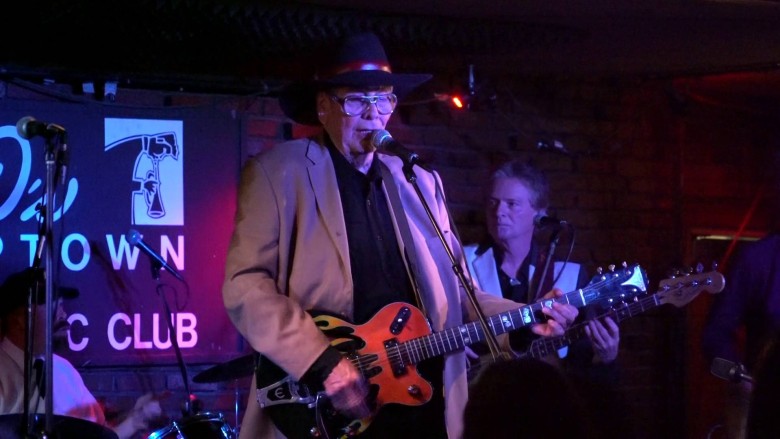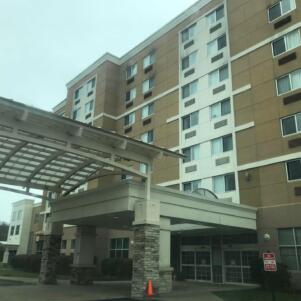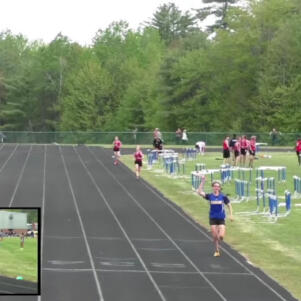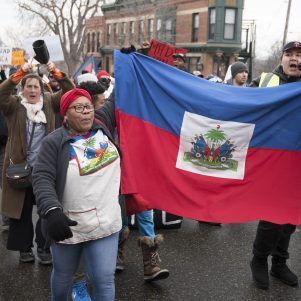Boston’s costs challenge artists trying to thrive
By Theodore Bunker | March 30, 2016, 6:04 EDT
 Sleepy LaBeef made Johnny D’s in Somerville a regular stop in recent years. (Image courtesy of YouTube.com)
Sleepy LaBeef made Johnny D’s in Somerville a regular stop in recent years. (Image courtesy of YouTube.com) BOSTON – Can Boston compete with New York and Los Angeles artistically? Statistics indicate the competition so far hasn’t favored the Bay State capital, as just 3 percent of working artists in America can be found in Massachusetts, compared with 11 percent in New York and 28 percent in California, according to educationnews.org.
While the raw numbers suggest that Boston lags far behind New York City and Los Angeles as a center for the arts. But according to Richard Florida, author of “Rise of the Creative Class,” greater Boston contains some of the nation’s highest proportions of creative professionals. Florida argues that the presence of artists will play a key role in urban economic development in the 21st century.
Boston’s much smaller population compared with L.A. and New York accounts for some of the discrepancy, but if the Hub wants to compete culturally with these much larger cities, it may need to make a greater effort to reward artists for living here.
When referring to artists, it’s important to note that the group includes visual artists, like painters and sculptors, but also musicians, dancers, and writers: People who create works that inspire and challenge, or works that simply entertain. Measuring the value of an artist can be difficult. Museums, galleries, theaters and music venues generate revenue, but not much, and for artists, they usually aren’t reliable sources of income.
Music venues are especially ephemeral, usually only lasting for a few years before going out of business. The few that have become landmarks provide some of the only reliable work for musicians and even some of those don’t last – as in the shutdown of Somerville’s Johnny D’s this month after more than 47 years of offering live music.
Many Boston-based musicians move to L.A. and Nashville, Tennessee, according to Michael Creamer of the Red Room at Boston’s Berkeley College of Music. Although he credits Mayor Marty Walsh with hiring new staff to focus on helping artists, Creamer notes that Boston lags behind other U.S. cities in a few key ways.
In Seattle, for instance, the city instituted a program that lets performers reserve parking spaces near venues, saving them potentially hours of trouble finding a place to park and then carrying their equipment over to where they’re playing.
But Boston comes up short when it comes to commercial enterprises that support musicians. The Hub lacks a recording industry presence found in places like New York, home to Sony and Warner Music, while Universal is based in southern California. And there is scarcely a film/video industry to speak of either, all of which has prompted prominent creative people to abandon greater Boston.
In a recent high-profile Facebook.com post, Boston-based filmmaker and musician Michael Epstein announced that he and his partner, Sophia Cacciola, have decided to relocate to Los Angeles. The main reason for their departure, as repeated numerous times in his post, is the rapidly rising cost of living in Boston and the surrounding neighborhoods, and the lack of interest in funding the arts.
“Every year, more and more of our friends give up and move outside the city because they can no longer afford the rent,” the couple said in the Facebook post. “Boston, as a community and as an institution, fails to support startup and mid-level arts groups.”
As rents rise so does the value of real estate, and artists are having a tough time making a case for the value of art spaces.
“No one wants to open their eyes to see the tremendous financial and cultural contribution of the arts, which does not come with anything close to commensurate financial reward,” Epstein and Cacciola said. “We just don’t envision a serious movement to make creative work viable within the context of skyrocketing costs of living in this area.”
The difficulties of finding affordable space in Boston can be daunting for artists, according to Randi Lathrop of RG Lathrop Consulting, a longtime veteran of Boston real estate development.
“As neighborhoods change and improve, unfortunately artists have to move on,” Lathrop said, pointing to transformations that have swept the South End in recent years, driven by rising property values.
“Market prices move up high and it’s a free economy,” Lathrop said. She notes that many displaced artists have moved to the Newmarket area. Designated as a light-industrial area by the city, Newmarket is mainly known for its wholesale businesses, factories and food processors that support local supermarkets and restaurants. But it is also fast becoming one of the few areas near downtown that is affordable to visual artists. A disused factory can provide an ideal location for artists’ workspaces.
There have been a few successful efforts to create affordable housing specifically for artists. ArtBlock, strategically placed in the South End by the Joshua Bates Art Center, has 26 lofts permanently restricted as affordable live/work space for artists, for example.
Peter Roth, president of New Atlantic Development which developed ArtBlock, worked closely with Boston officials, including the late former Mayor Tom Menino’s Artist Space Initiative in particular. Other housing offerings for artists, such as Laconia Lofts also in the South End, and Brookside Artists’ Loft in Jamaica Plain, offer similar deals.
“None of these things happen without public support, support of city and state politicians,” Roth said. “It’s important to have policymakers who are supportive.”
Roth applauds efforts by Menino, Walsh and Julie Burros, the city’s chief of Art and Culture, to improve conditions and opportunities for artists in Boston.
Artist lofts are incredibly useful, but they have several drawbacks. Large indoor space means fewer apartments, and prospective tenants can face years on waitlists trying to get a spot. It’s also difficult to justify affordable housing specifically meant for artists when there are so many other people who desperately need affordable housing in Boston.
Affordable housing may not be enough for Boston’s art scene to survive and thrive. Despite the city’s attempts to welcome movie producers, most aspiring actors and filmmakers still flock to Los Angeles and New York. And although more and more movies are being filmed in Boston, it remains more comparable with Vancouver, British Columbia, and Atlanta than Hollywood.
New York remains a global publishing industry capital, and has a wealth of museums and galleries as well. The media, theater, television and recording industries there offer a myriad of opportunities that can keep creative people employed and paid well enough to survive.
Boston’s artistic industry hardly compares to Gotham’s, although the Hub does have some distinct advantages. The region’s staggering number of academic institutions attract thousands of young artists just as they begin to study and refine their craft. And with over 50 colleges and universities, there’s ample opportunity for artists to find work teaching, even if that leaves them with less time and energy to create their art.
If Boston wants to foster a world-class artistic community and industry, experts like Creamer, Lathrop and Roth agree that the surging cost of living is No. 1 issue in the way. It is simply too difficult for most artists to both pay the rent in Boston and find time to work on their art.
Boston is a small city. Many people like it just for that reason, but its size and policies that tend to impede development, like zoning rules and height restrictions, make living here expensive. And without strong incentives to stay, artists like Epstein and Cacciola often find themselves forced to seek more realistic options outside the city and the region.
What’s the solution? How can Boston attract and keep artists, whose creative impulses tend to rub off on others in the community? One way may be to ensure they have a place to live and work that they can afford, ideally creating a hub for a community of artists to both support and inspire each other.
NBPUrban










